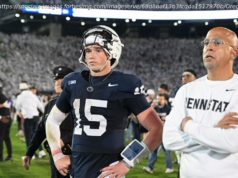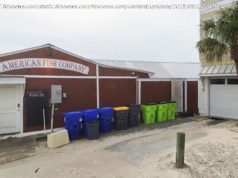STEINBERG: Ringling Brothers and Barnum & Bailey was the biggest circus, its three rings alive with action, an overwhelming spectacle.
The elephants were important after all.
A year after Feld Entertainment, owners of Ringling Brothers and Barnum & Bailey Circus, bowed to pressure from animal rights activists and retired their 40 performing pachyderms, a “dramatic” slump in ticket sales prompted the 146-year-old “Greatest Show on Earth” to announce in January that it was going out of business.
Which it did Sunday night, after one final show at Nassau Coliseum in Long Island, New York.
The wonder is it lasted this long.
The death of the circus — the biggest, most famous American circus anyway — couldn’ t have been just the elephants. High operating costs also did in the last circus to travel by train as smaller, nimbler, more innovative shows, such as Cirque du Soleil, gobbled up audience dollars without having to worry about feeding lions, tigers and bears.
And an audience that could fight alien monsters or dogfight in spaceships or have almost any adventure imaginable while sitting on their living room sofa and jiggling a joystick didn’ t need to go to the circus. The circus came to them.
When the boys were small, we’ d go to the Ringling Brothers circus. It seemed almost child abuse not to. The circus was America, a vision of America. The ringmaster in his tall hat, the lion tamer and his cracking whip, the swaying elephants with their feathered and sequined headpieces, ridden by showgirls. It was somehow both wonderful and deeply familiar, a cliche come to life. And those who didn’ t appreciate the classic acts could be entertained by the new twists — those motorcycles racing around their spherical cage of death. That was something to see.
When I asked my older boy, 21, if he’ d miss the circus, if he was sorry to see it go, he said, “No. Not really. It was before my time.”
It was before all of our times. Before the internet, before television or movies or radio, the circus was the flashiest entertainment you could find, traveling from town to town, delighting audiences with clowns and acrobats, prancing ponies and death-defying feats.
You could spin this milestone a number of ways. As a triumph of the culture of victimhood — we sympathize too much with animals now to put them through the ordeal needed to perform. It was hard to shepherd the kiddies past protesters denouncing its cruelty, and the suspicion that they had a point lingered in the back of the mind, sapping what was supposed to be an innocent joy.
You could blame the economy. The circus was expensive. Tickets to the final show ranged from $29 to $90 and no, it was not sold out, but nearly.
You could blame a dwindling of childhood — toy stores shuttered too — and the age when a kid might be agog at a seal balancing a ball on its nose probably ends in the upper single digits.
I wondered if it became routine for the performers too, and once asked a Ringling Brothers human cannonball, who had been shot out of a cannon 5,000 times, if doing his act ever became dull.
“It’s never the same, ” Jon Weiss, the “Human Clown ‘n Ball” told me in 2000. “I try not to make it dull. You always try to improve what you’ re doing, trying to fly further or straighter or land different.”
There were circuses before Ringling Brothers — itinerant entertainers going back through the Middle Ages, to Roman times, traveling troupes. And circuses yet survive — Circus 1903 uses elephant-sized puppets and is performing for the next 17 nights in Dallas.
But Ringling Brothers and Barnum & Bailey was the biggest, its three rings alive with action, an overwhelming spectacle. If you went to the circus and saw it, then you know what I mean. And if you never went, well, now you’ re never going to.






